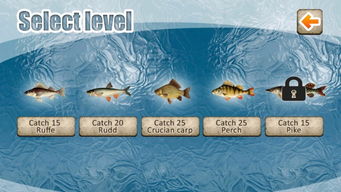
In the realm of angling, the skill of chasing a baitfish while trolling is an art form that separates the beginners from the seasoned veterans. Whether you're after salmon, trout, or other species that feed on baitfish, mastering the technique of "trolling for the漂" can significantly enhance your chances of a successful catch. This article delves into the essential techniques and methods to help you become a proficient chaser of the漂.
Understanding the Basics of Trolling for Baitfish
To begin with, it's crucial to understand that "trolling for the漂" involves using a lure that mimics the movement of a baitfish. The idea is to attract the attention of larger predatory fish that are following schools of baitfish. Here's a breakdown of the key components:
Choosing the Right Lure: The lure you choose should closely resemble the baitfish in the area you're fishing. This could be a plug, a spoon, a soft plastic, or even a fly. The color, size, and action of the lure should all be tailored to the species you're targeting.
Speed and Depth: The speed at which you troll and the depth at which your lure runs are critical. Too fast or too slow, and you might miss the strike window. Experiment with different speeds and depths to see what works best in your specific conditions.
Timing and Presentation: The way you present your lure can make or break your chances. It's not just about where the lure is, but how it's moving. A erratic, lifelike motion is often more effective than a steady, straight pull.
Advanced Techniques for Trolling for Baitfish
Once you have a grasp of the basics, here are some advanced techniques to refine your skills:
Trolling in a zigzag pattern: This technique involves moving the boat in a series of sharp turns rather than a straight line. It's particularly effective for covering more water and presenting your lure to more fish.
Using a downrigger: A downrigger allows you to troll at a consistent depth, which is crucial for attracting fish that are feeding at a specific depth. Adjust the weight to match the depth of the baitfish and the water conditions.
Trolling in the morning or evening: Fish are often more active during these times, so targeting the first few hours of daylight or dusk can increase your chances of success.
Adjusting to weather conditions: Windy conditions can make it difficult to maintain a steady troll. In such cases, consider using a fishfinder to help you keep track of your lure's position.
Learning from the experts: Watching professional anglers or joining fishing tours can provide invaluable insights into advanced trolling techniques. Sometimes, a simple tip or adjustment can make a significant difference.
Specific Methods for Trolling for Baitfish
Here are some specific methods that can help you become a more effective chaser of the漂:
Jigging: Jigging involves a series of short, sharp twitches with the rod to mimic the erratic movement of a struggling baitfish. This technique is particularly effective when the fish are in a feeding mood.
Ripping: Ripping involves a quick, hard pull on the line to make the lure dart forward, followed by a quick stop. This action can mimic the sudden bursts of speed that baitfish use to escape predators.
Trolling in a "pod": Forming a group of boats (a "pod") and working together to cover more water can be highly effective. By coordinating your movements, you can create a school of baitfish that attracts the attention of larger predators.
Using a fishfinder: A fishfinder can help you locate schools of baitfish and predict where the predators might be. By targeting these areas, you can increase your chances of success.
Adjusting to fish behavior: Pay attention to the behavior of the fish you're targeting. For example, if they're known to follow baitfish in tight schools, try to mimic that behavior with your lure.
In conclusion, mastering the art of trolling for baitfish requires a combination of knowledge, skill, and experience. By understanding the basics, experimenting with advanced techniques, and learning from others, you can significantly improve your chances of hooking into that big catch. So, get out there, cast your line, and start chasing the漂 with confidence!












